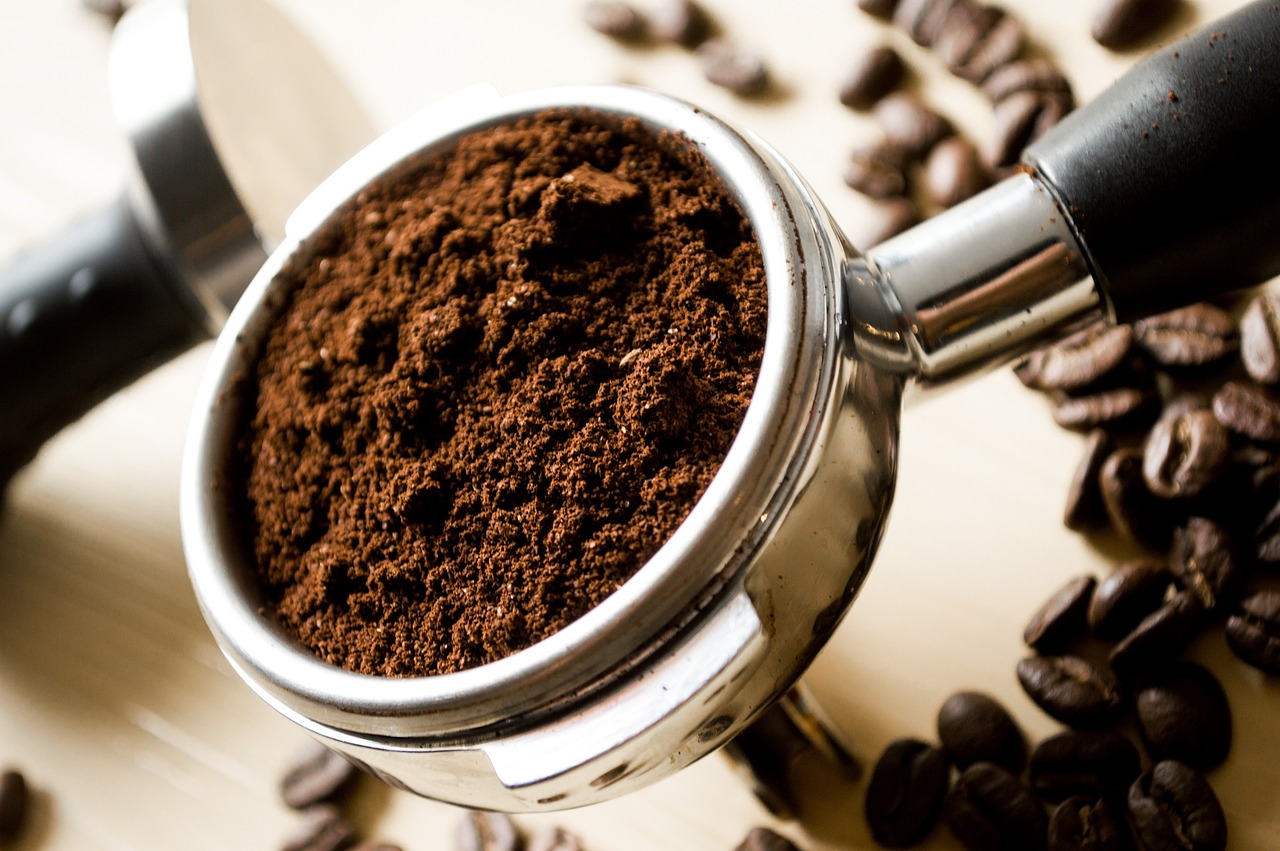
The softs commodities composite rose by 1.89% in Q3 2025, thanks to gains in Arabica coffee and frozen concentrated orange juice futures. The sector was 19.25% lower than the 2024 closing level at the end of September 2025, with four of the five softs posting losses, and two moving over 40% lower.
I concluded my Q2 Barchart article on soft commodities with the following:
The six-month declines in Arabica coffee, cocoa, and FCOJ futures, which had reached new record highs in late 2024 and early 2025, are examples that the cure for high prices in commodities is those high prices. These agricultural commodities rose to price levels that defied logical, reasonable, and rational fundamental and technical analysis; a phenomenon often observed in the volatile commodities asset class. However, parabolic rallies send prices to levels that encourage increased production or substitution, leading to rising inventories and falling consumer purchases, which creates price tops as we have seen over the past few months. While coffee, cocoa, and FCOJ prices have declined, they remain historically elevated in early Q3, which suggests there may be more downside potential.
Sugar and cotton futures remain under pressure, making lower highs and lower lows. However, the world sugar and cotton futures offer more value than the other softs, as prices are nowhere near historical highs. As the soft commodities are now in the second half of 2025, underperformance compared to the other commodity sectors continues, following a period in which softs led the asset class in 2023 and 2024. Commodity cyclicality is a powerful force. If sugar and cotton prices continue to reach lower lows, they could be excellent candidates for recovery, as low prices cause production and inventories to decline, leading to increased consumption and significant price bottoms.
In early Q4, soft commodity prices were mostly lower.
World sugar futures move higher in Q3 but declined over the first three quarters of 2025
World sugar futures #11 on the Intercontinental Exchange moved 4% higher in Q3, but remains under pressure in 2025, with a 16.41% decline over the first nine months of this year.
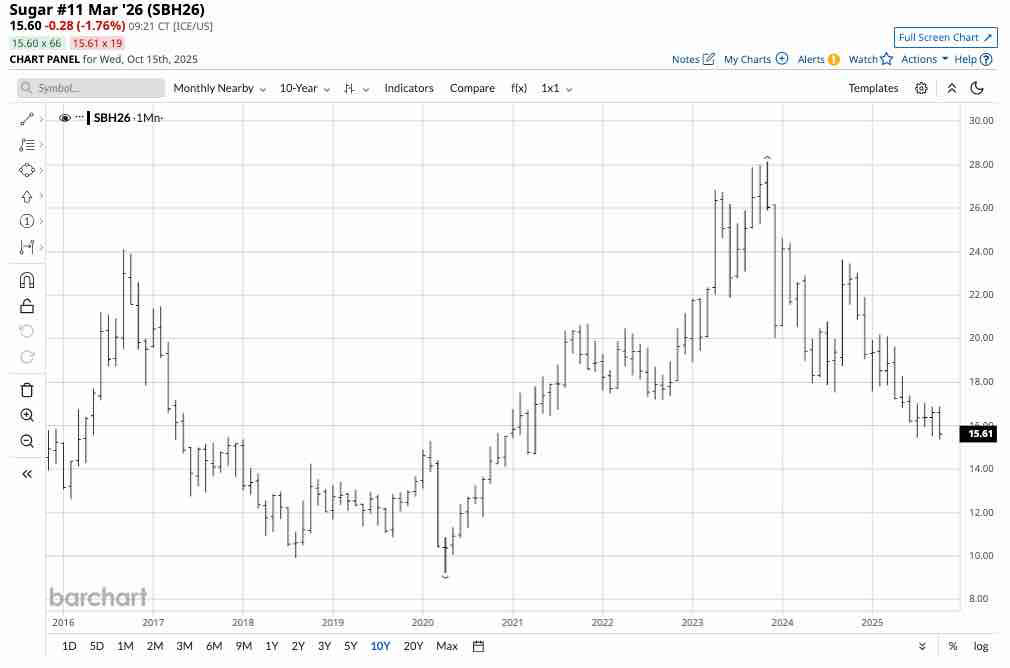
Nearby ICE sugar futures settled Q3 at 16.10 cents per pound. The monthly chart highlights the bearish trend since the November 2023 high of 28.14 cents per pound. The March futures at 15.60 cents per pound in mid-October were lower in early Q4.
Arabica coffee futures rally
Concerns over Brazilian coffee crops caused Arabica coffee futures to rally 22.2% in the third quarter. The coffee futures moved 17.23% higher over the first nine months of 2025.
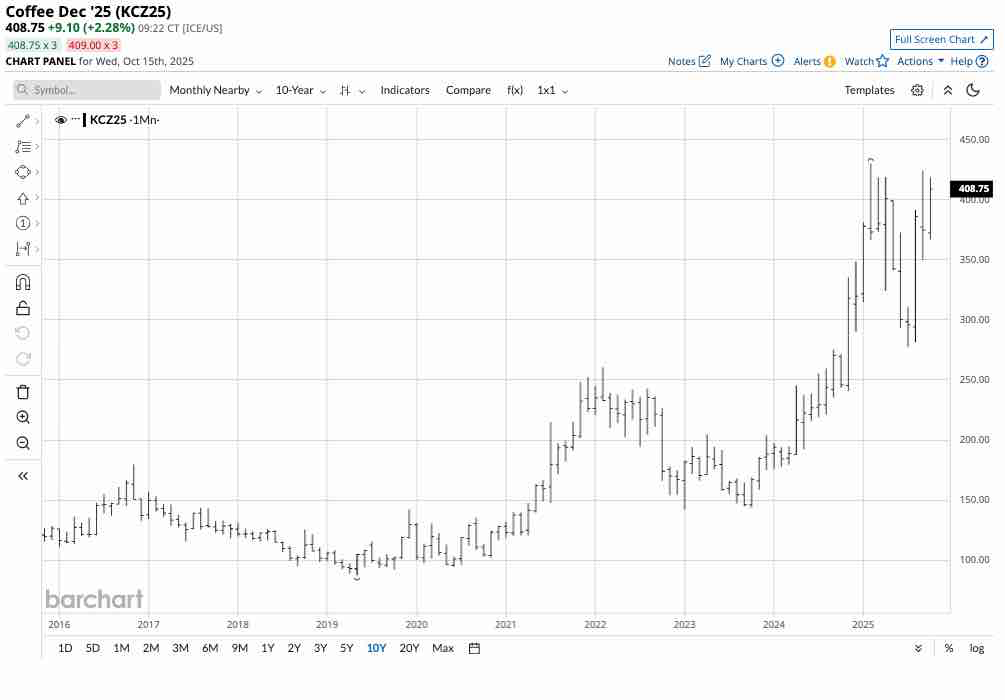
The monthly chart highlights the bullish price action that took the coffee futures to $3.7485 per pound on September 30, 2025. Coffee futures were substantially higher at $4.0875 per pound in mid-October 2025. The coffee futures were the best-performing soft commodities in Q3 and since the end of 2024.
Cocoa plunges
After soaring to new record highs in late 2024 at $12,931 per ton, cocoa futures led the soft commodities sector on the downside in Q3 with a 27.86% decline. Cocoa futures were the second-worst performing soft commodity over the first nine months of 2025, posting a 42.19% decline.
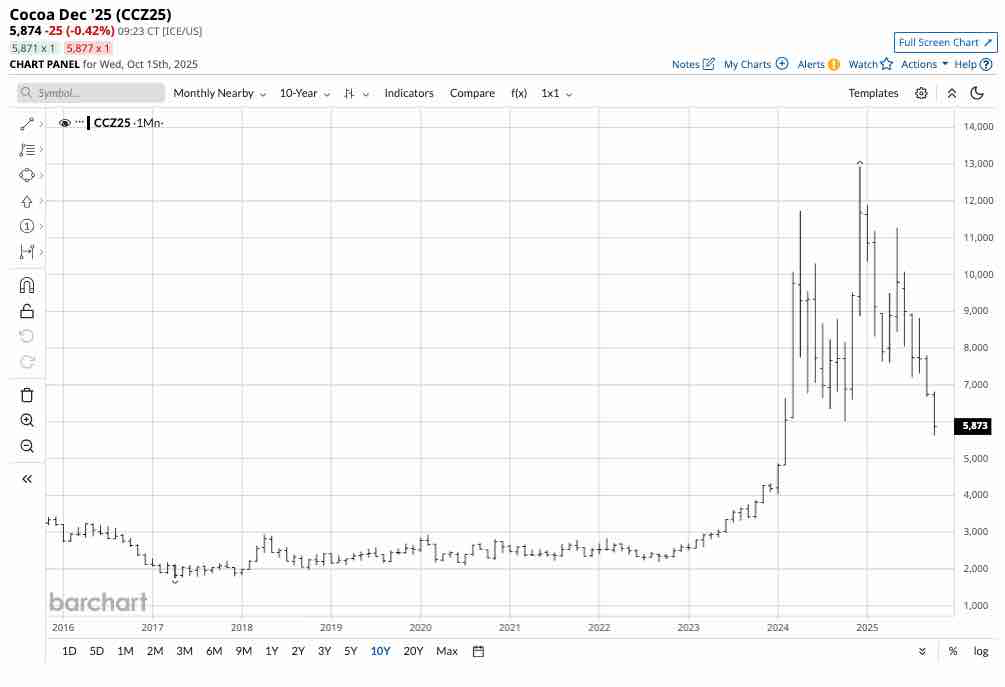
The monthly chart highlights the bearish trend, likely due to commodity cyclicality. Prices tend to rise to levels where production increases, inventories grow, and consumer demand declines, leading to lower prices. Cocoa closed Q3 at $6,749 per metric ton, and was lower, below the $5,900 level in mid-October 2025.
Cotton and FCOJ prices decline
Cotton futures edged only 0.77% lower in Q3 and were 3.85% lower than the 2024 closing price at the end of September 2025.
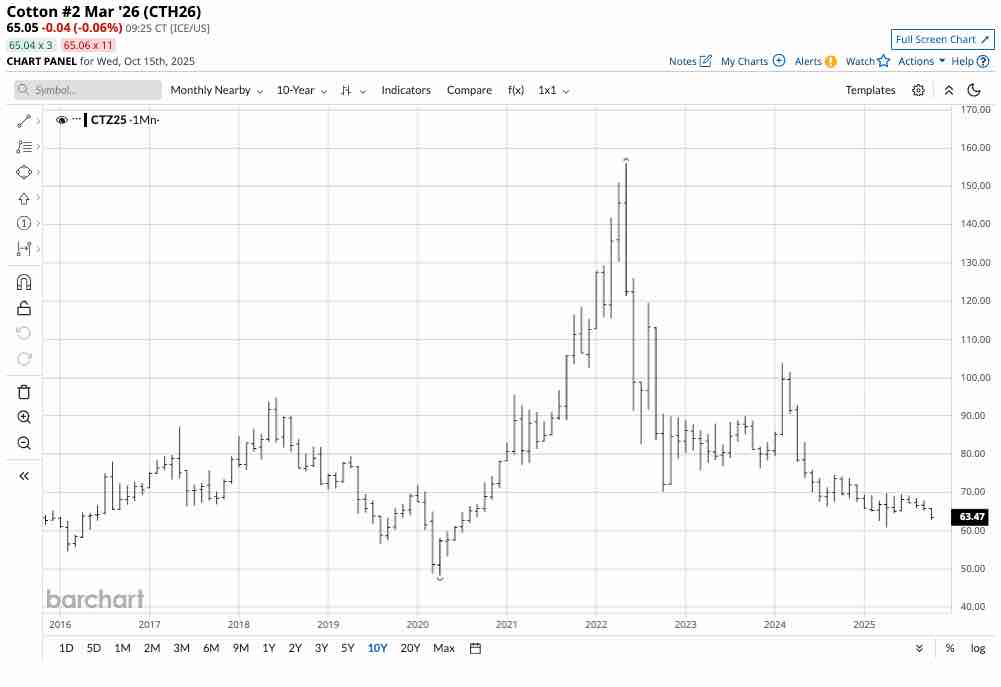
The monthly chart illustrates that nearby cotton futures settled at 65.77 cents per pound on September 30, 2025. Cotton futures have been in a bearish trend since the May 2022 high of $1.5595 per pound and were slightly lower than the Q3 closing price in mid-October 2025 at just above 65 cents per pound.
While frozen concentrated orange juice futures were the second-best performing soft commodity in Q3 with an 11.90% gain, the FCOJ was the worst-performing soft commodity over the first three quarters, posting a 51.04% decline.
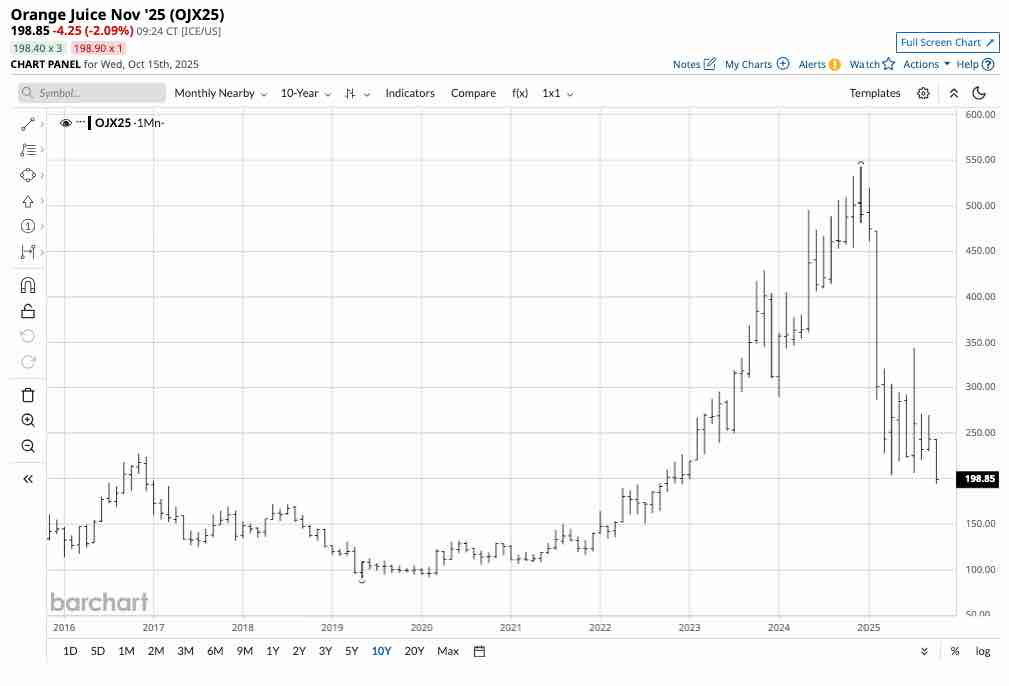
The monthly chart highlights FCOJ’s drop from the December 2024 all-time high of $5.4315 to the September 30, 2025, closing price of $2.4355 per pound. FCOJ was significantly lower in mid-October at just below $2 per pound. While commodity cyclicality likely accounted for the decline, FCOJ is the least liquid soft commodity with the lowest open interest and daily trading volumes. Illiquidity tends to increase price volatility.
The outlook for Q4 and beyond
While coffee prices remain elevated in early Q4, cocoa and FCOJ, the other soft commodities that rose to record highs in 2024 and 2025, are in bearish trends. Sugar and cotton prices are also experiencing bearish paths of least resistance, but they are at price levels where commodity cyclicality can provide support over the coming months. Prices tend to decline to levels where production declines, inventories fall, consumers increase purchases, and prices turn higher.
I remain bullish on sugar and cotton prices at the current price levels, but will leave plenty of room to add on further declines, as picking bottoms can be dangerous. Meanwhile, expect volatility in the soft commodities sector, which has gone from the leader of the asset class in 2024 to the laggard in 2025. The weather in critical growing areas, crop diseases, trade issues, and geopolitics can cause significant price variance in the tropical commodities. Meanwhile, cotton tends to move to annual highs during Q1 and Q2 as the uncertainty of the annual crop peaks. Given the price level below 66 cents per pound, cotton could be the best candidate for a price recovery from its current level.







